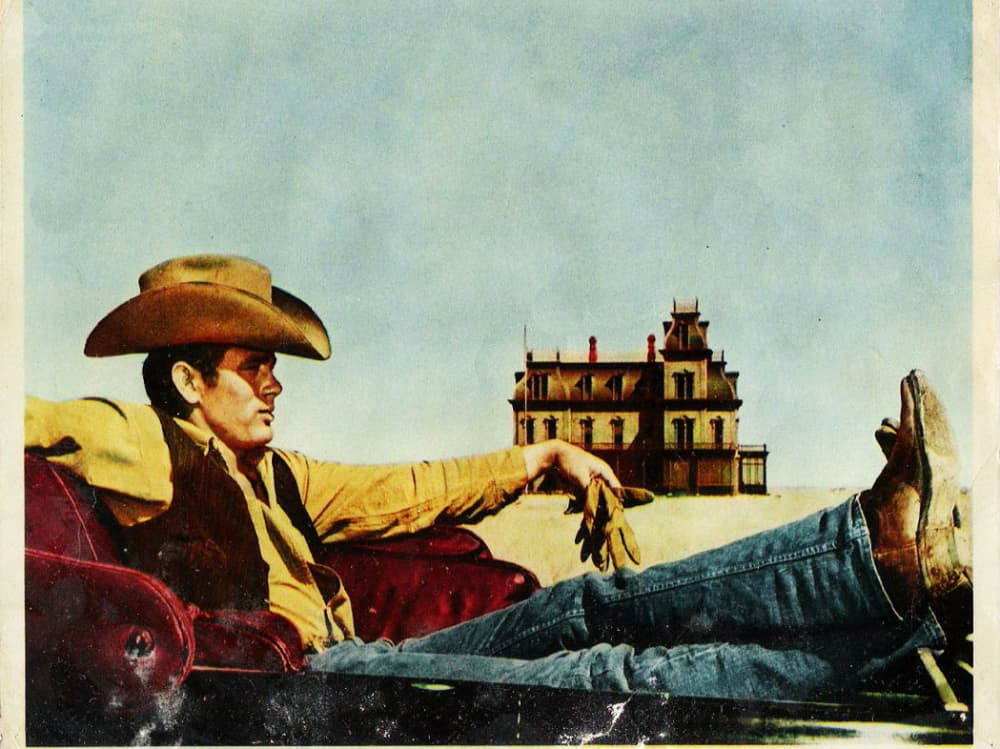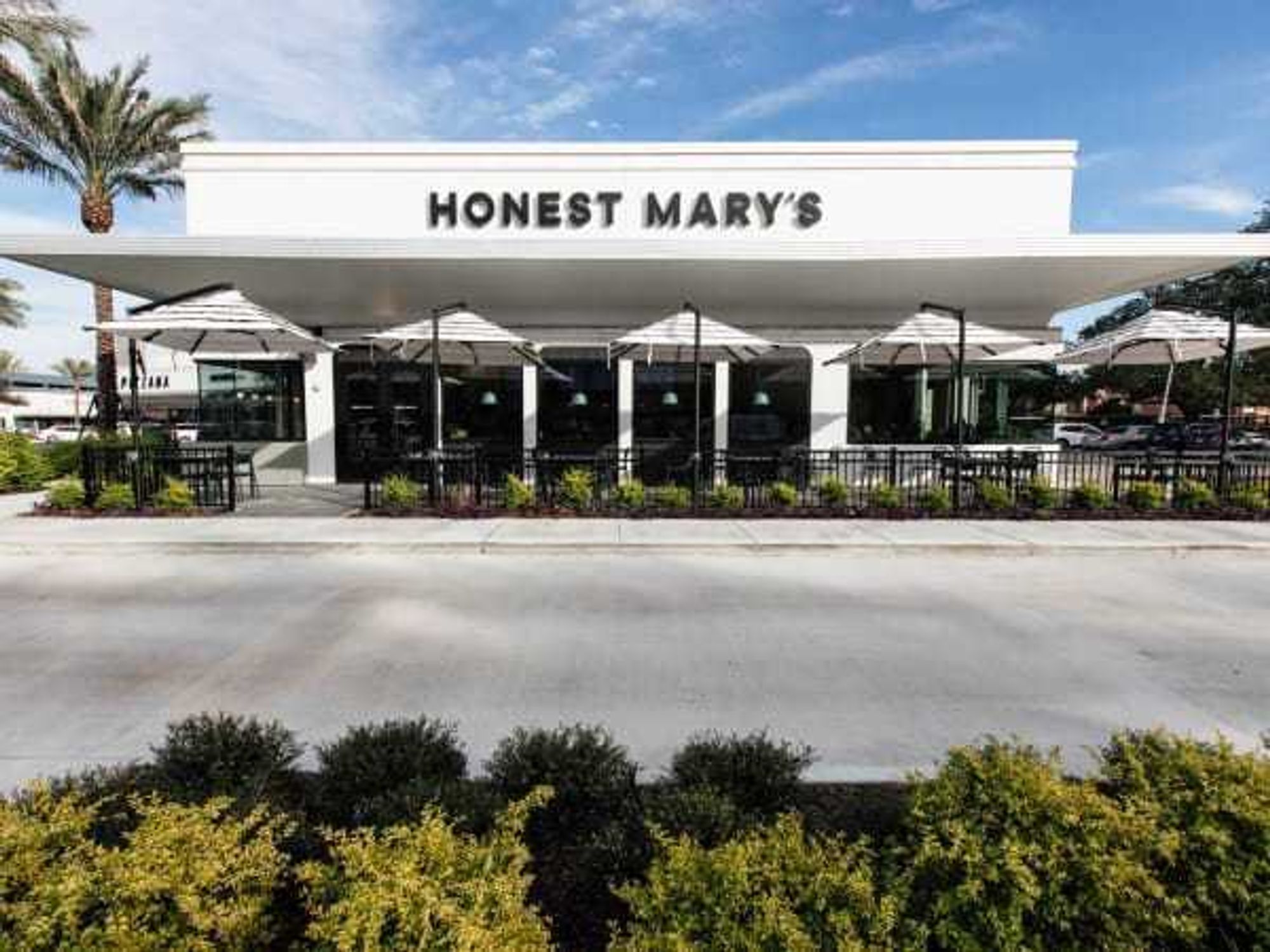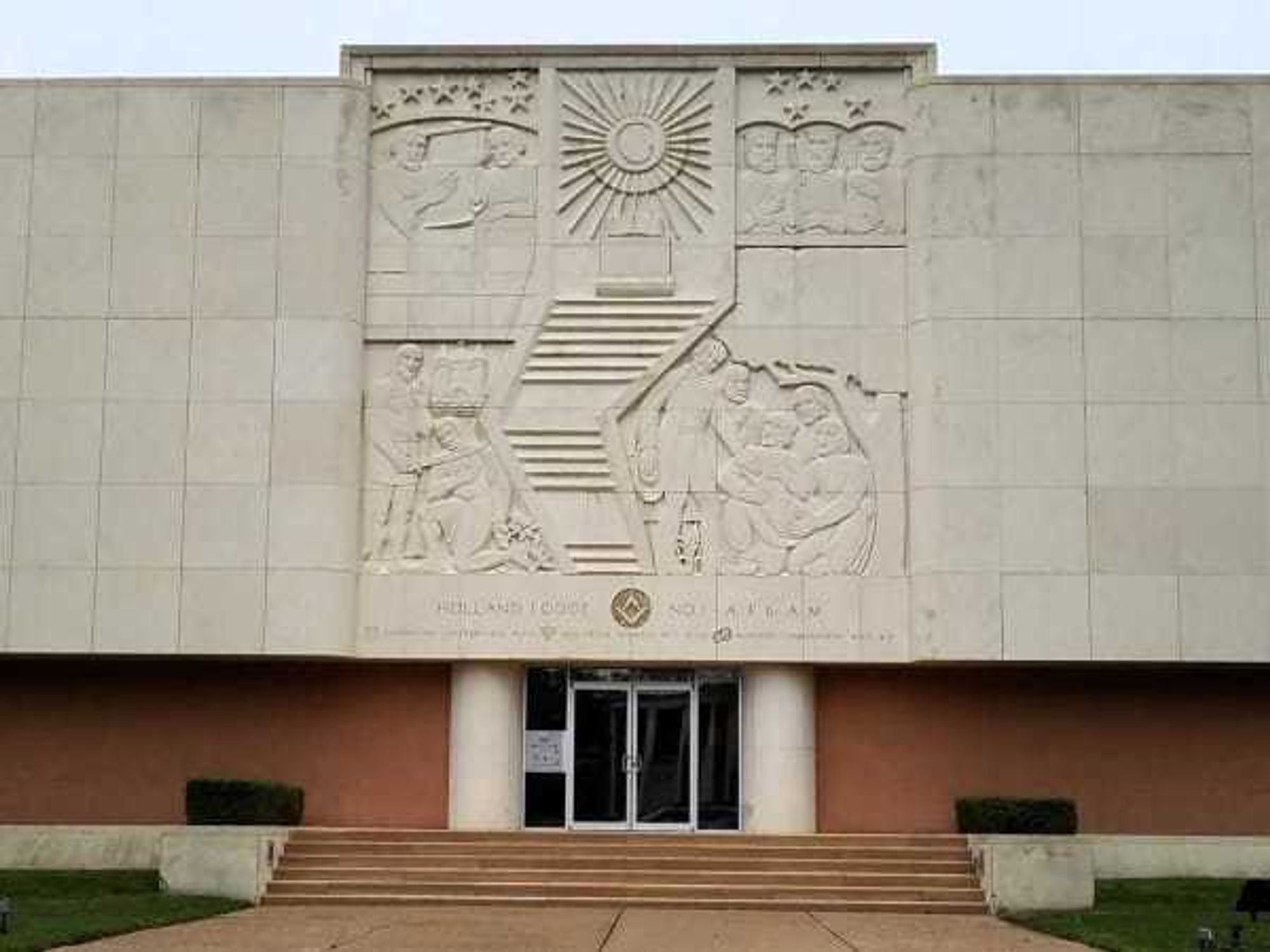A Man Walks Into A Bar...
Texan busts stereotypes in attempt to teach New Yorkers about tolerance andcivility toward gays
 A comic book depiction of what the incident at Smith& Wollensky's might havelooked like if it had been between Superhero and villain.MTV Geek News
A comic book depiction of what the incident at Smith& Wollensky's might havelooked like if it had been between Superhero and villain.MTV Geek News James Dean as the Texas wildcatter Jett Rink. It was his last major acting rolebefore his death.Photo courtesy of Warner Bros.
James Dean as the Texas wildcatter Jett Rink. It was his last major acting rolebefore his death.Photo courtesy of Warner Bros. Poster of the 1956 box office hit Giant
Poster of the 1956 box office hit Giant Rock Hudson as Bick Benedict fighting the owner of Sarge's Diner after heinsulted his newest Mexican American family members with racist remarks in theclassic movie, Giant.Warner Bros.
Rock Hudson as Bick Benedict fighting the owner of Sarge's Diner after heinsulted his newest Mexican American family members with racist remarks in theclassic movie, Giant.Warner Bros. Hudson ended up on the floor of the diner after taking a shellacking trying todefend his family's honor from racist remarks in the classic movie, Giant.Warner Bros.
Hudson ended up on the floor of the diner after taking a shellacking trying todefend his family's honor from racist remarks in the classic movie, Giant.Warner Bros.
Ever weary of the stereotype of a man from Texas: the Yankee dreaded Texan Homosapien? A wild-eyed, whiskey drinking, gun-toting loud mouth who invariably ends up in bar fight with a busted lip and stitches as some kind of trophy.
I went to a dinner with some former clients —now friends —where I was told a story about such a Texan (well, kind of) who while on business in Manhattan was eating dinner at the bar at Smith & Wollensky's and experienced a violent encounter.
First, let's talk about the historic origins of the perpetuated Texan archetype. In 1901, the discovery of oil at Spindletop, a salt dome in Beaumont, marked the beginning of an economic, political and societal force that continues to shape Texas today. So while cattle, cowboys and the Texas Rangers created a certain national folkloric bravado, modern day Texans arguably owe their reputation "up North" more to wildcatter oilmen than to gunslinging cowboys.
While cattle, cowboys and the Texas Rangers created a certain national folkloric bravado, modern day Texans arguably owe their reputation "up North" more to wildcatter oilmen than to gunslinging cowboys.
As told in Bryan Burrough's 2009 must-read, The Big Rich, Texas wildcatters like Hugh Roy Cullen, Clint Murchinson, Sid Richardson, H.L. Hunt, Glenn McCarthy and James Marion West led the creation of the larger-than-life Texan.
It was McCarthy, aka "Diamond Glenn," who daringly built Houston's legendary over-the-top boom-then-bust Shamrock Hotel, and West, aka "Silver Dollar Jim," who herded a fleet of 35 Cadillacs armed with loaded guns that he would drive around Houston throwing out silver dollars from its windows to less fortunate pedestrians.
Such tremendous riches by so many colorful characters were simply too hard for the world, especially Hollywood, to ignore. Real-life Texans who exemplified the fundamental shift of a dusty cattle range economy to one of lusty oil fields were brought to life and projected around the globe on the silverscreen.
A Giant of a movie
The best example is the 1956 box office hit Giant directed by George Stevens starring Elizabeth Taylor, Rock Hudson and James Dean — an adaptation from the 1952 novel by Edna Ferber. Giant won an Academy Award for Best Director and received nine other nominations including twice for Best Actor (Hudson and Dean).
Hudson plays Jordan "Bick" Benedict, the head of one of the wealthiest and most respected cattle families in Texas. He represents the collision of Texas's genteel past with its new, grittier oil future.
James Dean, who was killed in a car accident before the film's release, played Jett Rink, a rags to riches Texas oil wildcatter whose proclivity for racism and violence surfaced in a bottle of whiskey. The character of Rink was reportedly inspired by the "King of Wildcatters" Houston's own McCarthy.
Dean's Rink persona may have unfairly characterized McCarthy and the lot of Texas's new oil rich but he played it so well that America and the world embraced the identity as its romantic symbol of the rough and tumble entrepreneurial possibilities emanating out of America's frontier, marking a modern upgrade from cattle ranches to oil derricks with Texas unchallenged at the throne of the Western kingdom.
So it is the defiance of such Texan stereotypes in a supposed culturally progressive and liberally tolerant setting like Manhattan of all places that makes this story so important to tell.
A Manhattan encounter
Enter one John Lamar, a tall, handsome, broad shouldered, middle-aged, mild-mannered contemporary man who resembles Clark Kent. A University of Texas alum, Lamar returned to Houston in 1993 to join The Alexander Group, an executive search firm that has grown into a widely respected international success today.
Last October, he was in Manhattan on business. What follows is an account of the story he told me about what happened that evening as he dined at the bar in Smith & Wollensky's restaurant on 49th Street & 3rd Avenue — a place where locals mix with out-of-towners.
Incredulous and frustrated by what appeared to be everyone's acceptance of this behavior, Lamar told me that "I just couldn't take it anymore, I had to say something to them."
As he waited for his dinner to arrive, Lamar sat at the bar enjoying a glass of wine and friendly conversation with the bartender and two businessmen visiting from San Francisco. He noticed the arrival of two casually dressed tall and husky men. They sat at the bar to his right ordering martini's and behaving in a drunken manner.
By Lamar's account, these newcomers began to make boisterous anti-gay slurs followed by slapping high-fives and full belly laughter. He claims that these loud and publicly offensive barrages continued off and on for another 15 minutes with no response or admonition from the restaurant's staff or management or from a single customer.
Incredulous and frustrated by what appeared to be everyone's acceptance of this behavior, Lamar told me that "I just couldn't take it anymore, I had to say something to them."
Lamar: "So I turned to them and said, 'Hey guys would you mind just keeping it down, especially with the derogatory comments about gays. I have a lot of friends who are gay and I'm finding this offensive.'"
Guy at the Bar: (squaring off to face Lamar): "Well, that's your fucking problem."
Lamar (turning to look at his dinner plate as it was set on the bar in front of him): "Well that may be, but I still need you to stop."
Then suddenly, without warning, the guy at the bar blindsided Lamar with two massive "sucker punches" to the right side of his face. He was instantly knocked to the floor below the bar, completely stunned by what had just happened.
The gentlemen with whom he had struck up a conversation with from San Francisco helped him back to his feet. The bartender gave him a wet towel for his lip that was cut and badly bleeding. His unidentified accused assailant disappeared into the crowd as the assistant manager approached Lamar and said, "I'm really sorry, it's my first week on the job," and not much else. Lamar said "there was no recognition or admission that they should have asked these men to stop or leave; or at least cut them off since they clearly had too much to drink."
Lamar needed medical attention for his lip, but it was one of the Good Samaritans from San Francisco who not only helped him get out and onto the street to hail a cab, but tossed the driver a $20 with an order to rush him to New York Presbyterian Hospital where he recieved eight stitches for a cut lip. Not even a cold S&W steak to help with the swelling.
It's been several months since the incident and while Lamar immediately filed a report with the New York Police Department, no action or follow-up resulted from the NYPD. It turns out that the Smith & Wollensky's in New York City is owned by Fourth Wall Restaurants and not by the Smith & Wollensky's Restaurant Group that owns nine restaurants across the country, including the Highland Village location in Houston. I left two messages for Fourth Wall's media contact in hopes of obtaining a comment on their policy and training to handle such incidents but they went unreturned.
Is it a hate crime if a person is straight?
That said, there is one perspective missing from this story: Lamar's own sexual orientation. If he is gay shouldn't the incident warrant investigation as a hate crime or at least hate speech by the NYPD? According to the Federal Bureau of Investigation, a hate crime is defined as a "criminal offense against a person or property motivated in whole or in part by an offender's bias against a race, religion, disability, ethnic origin or sexual orientation."
Today, must Texans like Lamar, in places like Smith & Wollensky's in Manhattan, continue to stand up for tolerance and civility in the face of those who still hate people who are different...even if they take one hell of a shellacking for it?
It turns out that Lamar is straight. On that autumn night in Manhattan, he spoke out against hateful speech toward gays and was subsequently assaulted for his defense. Could such an assault be free and clear of any kind of legal consideration as a hate crime simply because the victim is not gay?
In other words, if the assailant's actions were a bias-motivated violence towards gays, why is the victim — as defender of the hate's target — required to be gay for the crime to legally qualify as one of hate?
Let's say a straight man goes into a bar with a gay male friend. A man next to them starts yelling anti-gay slurs across the bar. The straight man asks him to "Please, stop, you are offending me, I have a lot of friends who are gay." If the man summarily beats up both men, then is the crime against the straight man different from the crime against the gay man?
Alas, I'm not a lawyer nor trying to be one. I am simply retelling a story as it was told to me. One that I believe raises some provocative questions and thoughts to accompany it. (A request for comment on this incident from the National Gay and Lesbian Task Force office in New York went unreturned.)
I'll close by sharing the major subplot of the film Giant. It involves Bick's (Rock Hudson) deep racism toward Mexican Americans in Texas. At the end of the film, Bick enters a roadside Texas diner with his family, which now includes a Mexican daughter-in-law and the couple's mixed-race grandson. The owner of the diner issues several racial insults to his newest family members and "their kind," resulting in an all out fist fight that Bick clearly loses.
What the fight scene at the end of Giant underscores is Bick's transformation from racist to one of tolerance of the differences pouring into his changing world.
Today, must Texans like Lamar, in places like Smith & Wollensky's in Manhattan, continue to stand up for tolerance and civility in the face of those who still hate people who are different...even if they take one hell of a shellacking for it?
And let this story lose no irony on the reminder that Rock Hudson was in fact, gay.
--------------
Watch the Diner fight from the movie Giant on YouTube
The Daily Beast's 2011 Ranking of The Most Tolerant States in the U.S.
FBI's Hate Crimes by State (2009 most recent)
Hey FBI, how about an update on this for 2010 and 2011?

 The building at 4911 will be torn down for the new greenspace. Holland Lodge No. 1, A.F. & A.M./Facebook
The building at 4911 will be torn down for the new greenspace. Holland Lodge No. 1, A.F. & A.M./Facebook